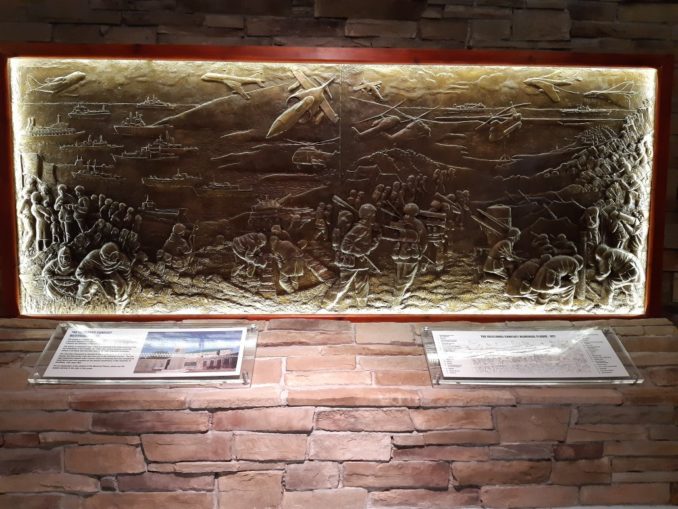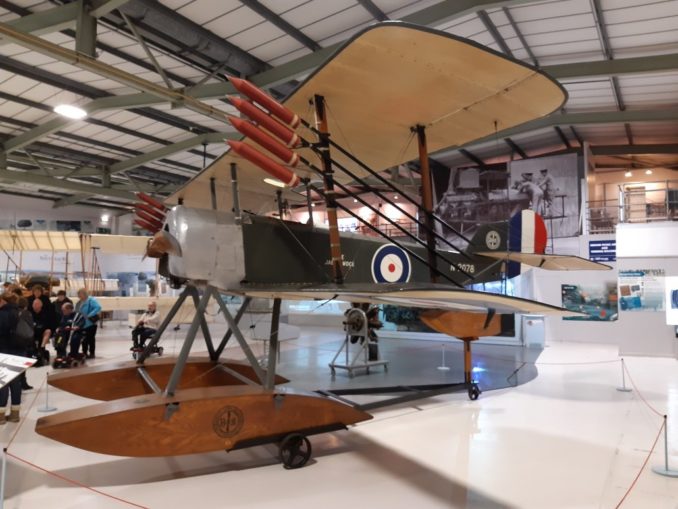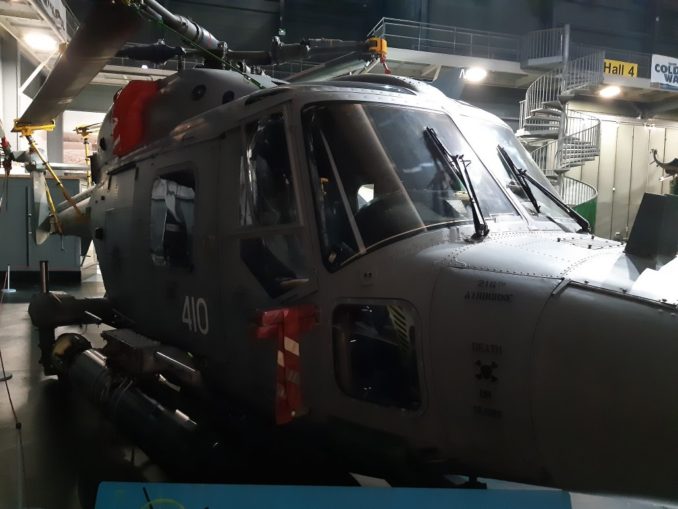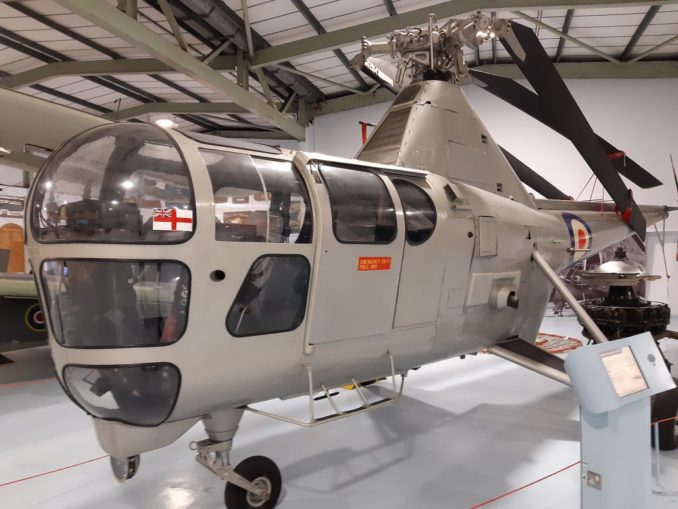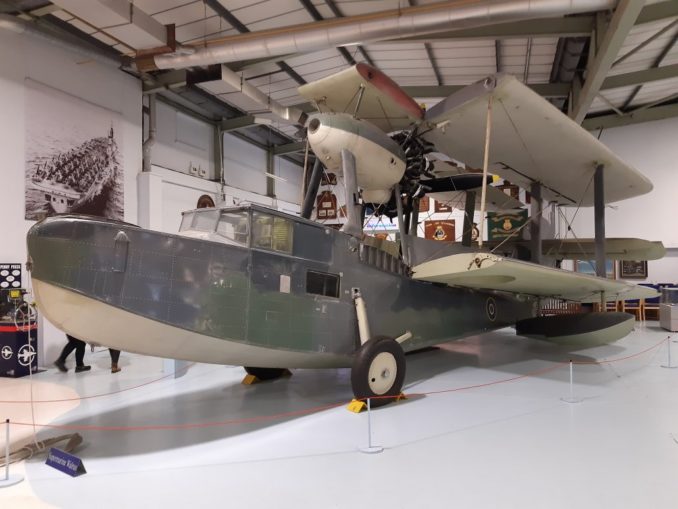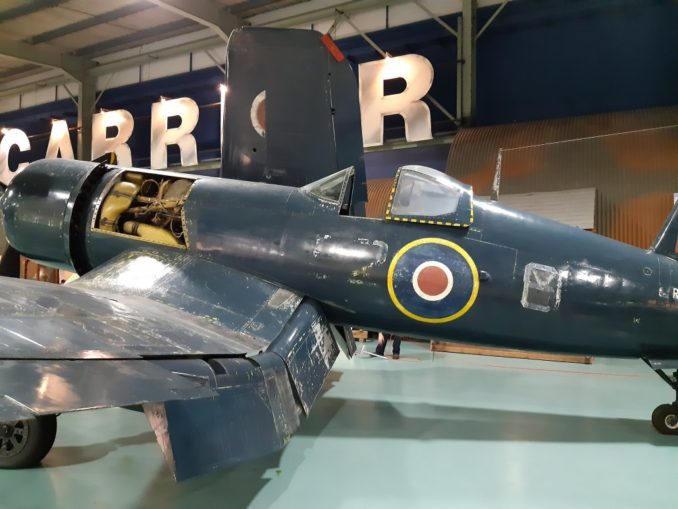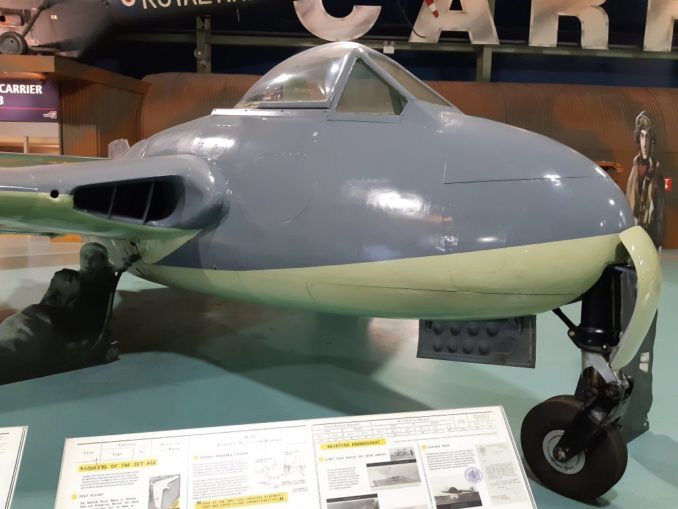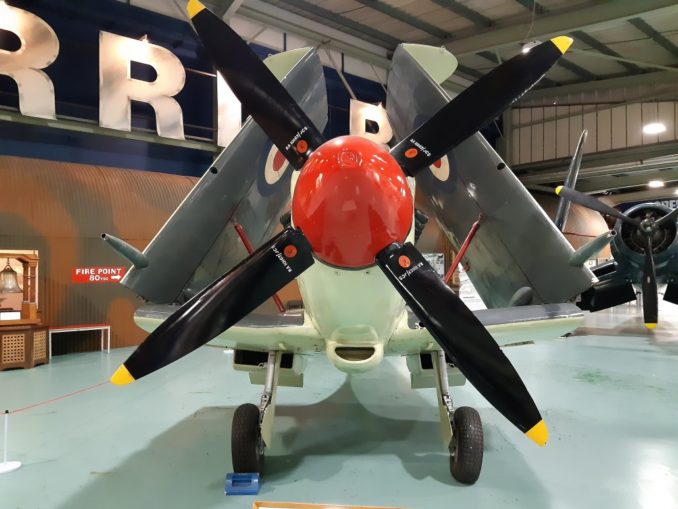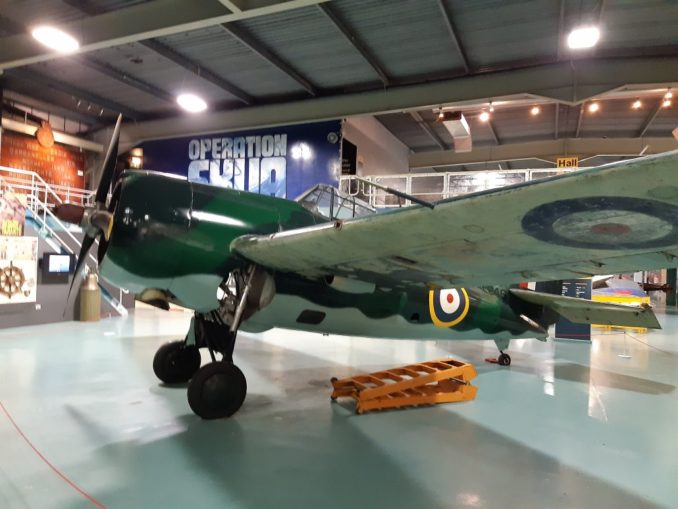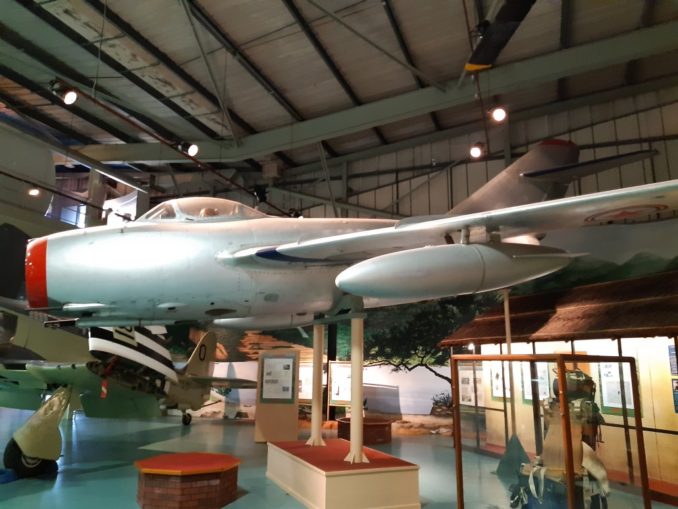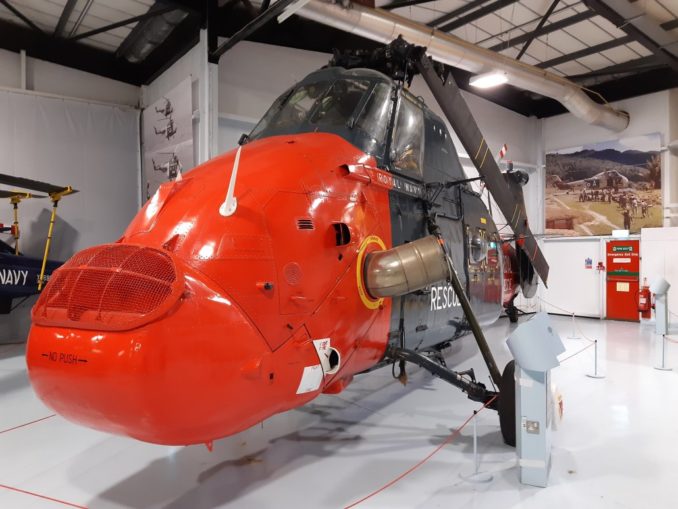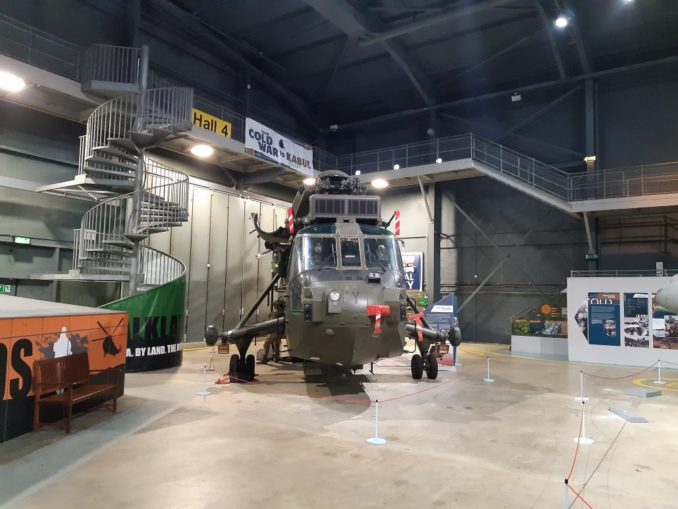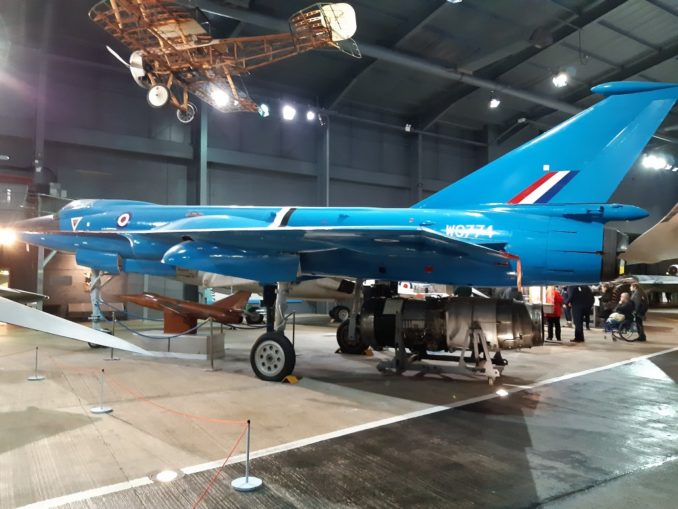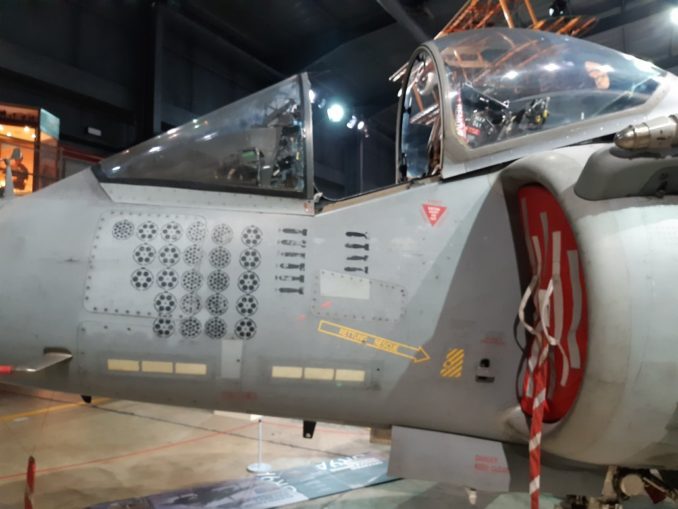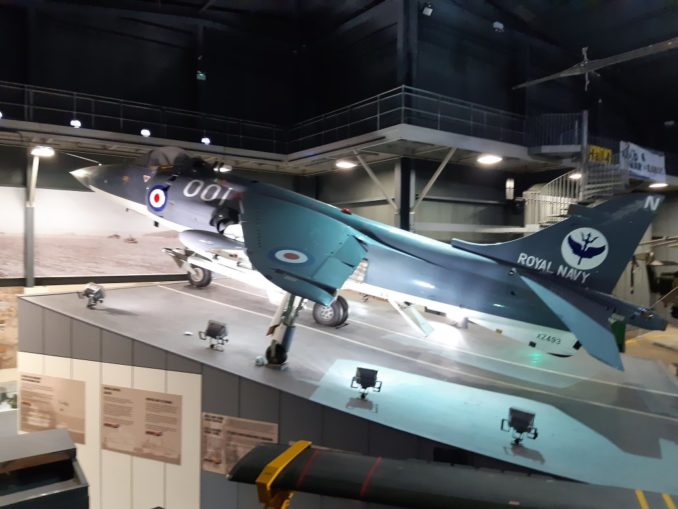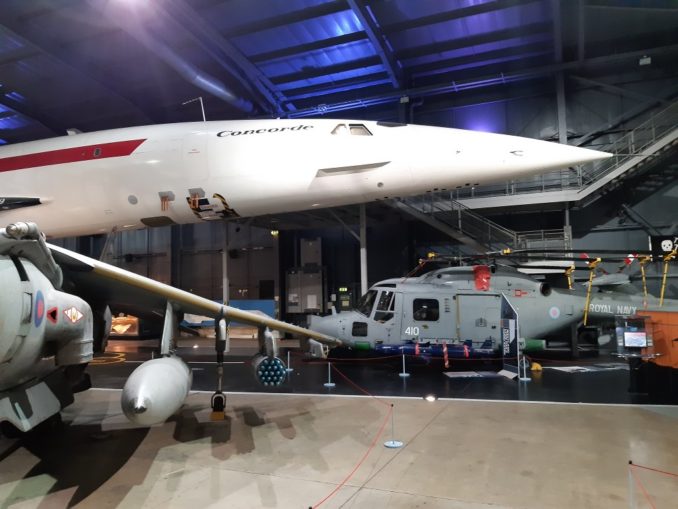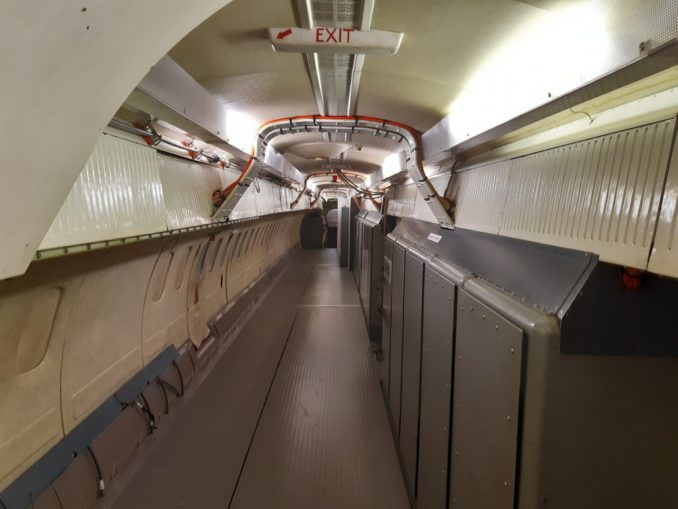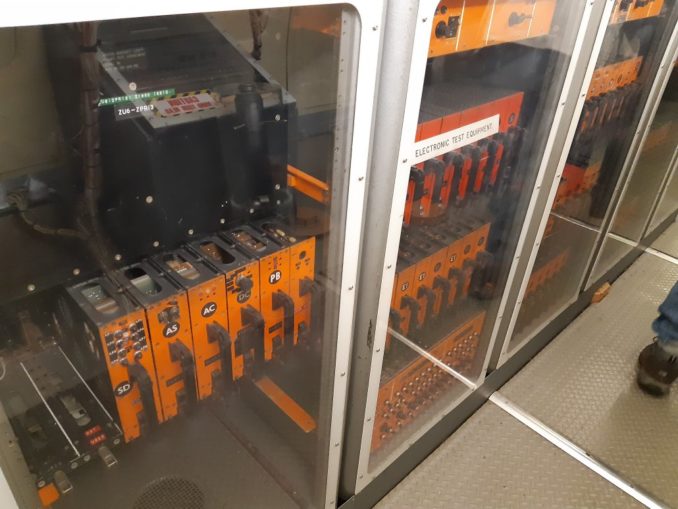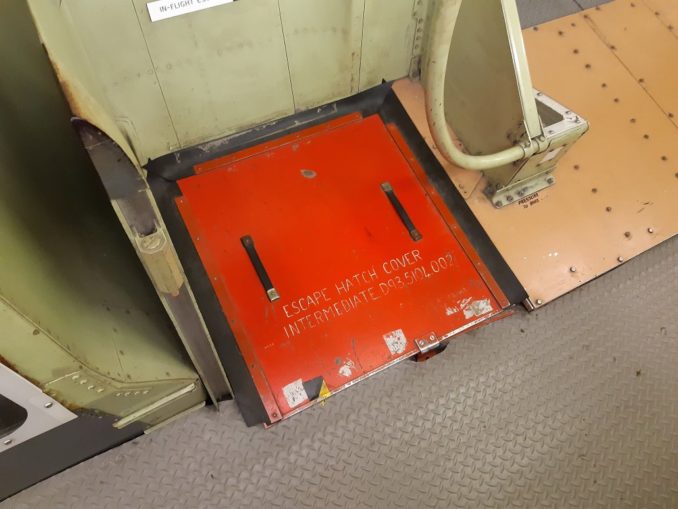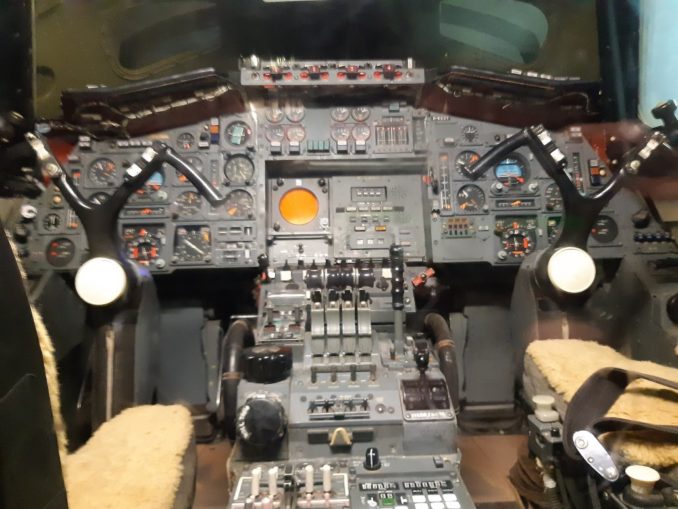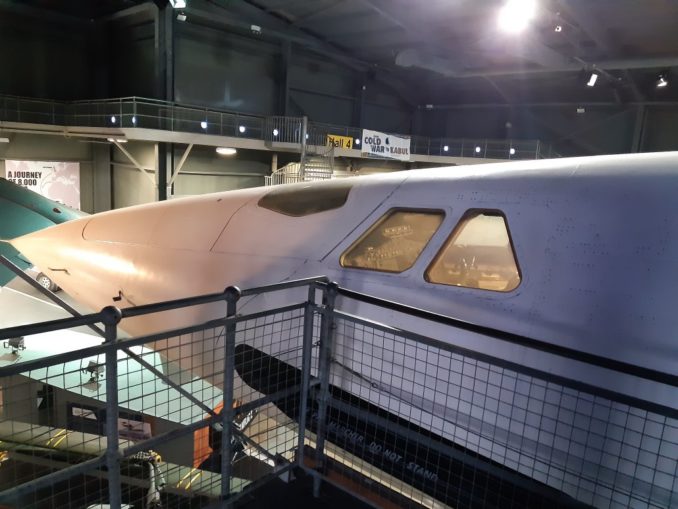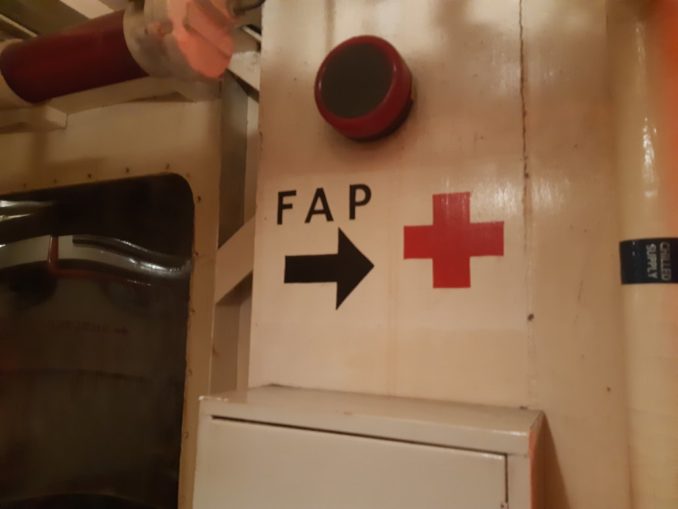End of January I had a trip down to the Fleet Air Arm Museum at RNAS Yeovilton with a couple of fellow Postaliers. Don’t arrive after 11 am if you want breakfast in the cafeteria. . .
The Fleet Air Arm Museum is devoted to the history of British naval aviation. It has an extensive collection of military and civilian aircraft, aero engines, models of aircraft and Royal Navy ships (especially aircraft carriers), and paintings and drawings related to naval aviation. It is located on RNAS Yeovilton airfield, and the museum has viewing areas where visitors can watch military aircraft (especially helicopters) take off and land. It is located 7 miles (11 km) north of Yeovil, and 40 miles (64 km) south of Bristol. – Wiki
We ended up paying £17 which buys you entry for a year, advance booking is cheaper. the Groupon advert I ignored when entering the address in Google Maps would have gained me entry for £9. Doh! I’ve looked but can’t find a link to it now.
The weekday we chose was out of school holidays so we pretty much had the place to ourselves. Perfect.
Best thing about the place is that it hasn’t been mucked about with. Not a flat screen with an interactive display, or any of that tat to be seen. Just the exhibits and models, it reminded me of the Science Museum of my youth. Plenty of interesting aviation and naval displays and history.
If you go make sure you take the ‘helicopter ride’. I won’t say anymore.
We were there for three to four hours and could easily have spent more time there.
A nice day out. Recommended.
Hall 1
Falklands Conflict War Memorial Swiss Bob , Going Postal 2020The original components of two Babies built by Sopwith, Nos. 8214 and 8215, have been utilized to complete a composite aircraft for display at the Fleet Air Arm Museum at RNAS Yeovilton, Somerset. The exhibit has been marked with the serial N-2078, which was a Blackburn-built aircraft, and has been named Jabberwock – Wiki Swiss Bob , Going Postal 2020The Westland Lynx is a British multi-purpose twin-engined military helicopter designed and built by Westland Helicopters at its factory in Yeovil. Originally intended as a utility craft for both civil and naval usage, military interest led to the development of both battlefield and naval variants. The Lynx went into operational usage in 1977 and was later adopted by the armed forces of over a dozen nations, primarily serving in the battlefield utility, anti-armour, search and rescue and anti-submarine warfare roles. – Wiki Swiss Bob , Going Postal 2020The Westland WS-51 Dragonfly helicopter was built by Westland Aircraft and was a licence-built version of the American Sikorsky S-51. – Wiki Swiss Bob , Going Postal 2020The Supermarine Walrus (originally known as the Supermarine Seagull V) was a British single-engine amphibious biplane reconnaissance aircraft designed by R. J. Mitchell and first flown in 1933. Designed for use as a fleet spotter to be catapult launched from cruisers or battleships, the Walrus was later employed in other roles, notably as a rescue aircraft for aircrew in the sea. The Walrus continued in service throughout the Second World War, with the Fleet Air Arm (FAA), Royal Air Force (RAF), Royal Australian Air Force (RAAF), Royal New Zealand Navy (RNZN) and Royal New Zealand Air Force (RNZAF). It was the first British squadron-service aircraft to incorporate in one airframe a fully retractable main undercarriage, completely enclosed crew accommodation and all-metal fuselage. – Wiki Swiss Bob , Going Postal 2020Hall 2
The Vought F4U Corsair is an American fighter aircraft that saw service primarily in World War II and the Korean War. Designed and initially manufactured by Chance Vought, the Corsair was soon in great demand; additional production contracts were given to Goodyear, whose Corsairs were designated FG, and Brewster, designated F3A. – Wiki Swiss Bob , Going Postal 2020The de Havilland Vampire is a British jet fighter developed and manufactured by the de Havilland Aircraft Company. It was the second jet fighter to be operated by the RAF, after the Gloster Meteor, and the first to be powered by a single jet engine. – Wiki Swiss Bob , Going Postal 2020The Supermarine Seafire was a naval version of the Supermarine Spitfire adapted for operation from aircraft carriers. It was analogous in concept to the Hawker Sea Hurricane, a navalised version of the Spitfire’s stablemate, the Hawker Hurricane. The name Seafire had been derived from the abbreviation of the longer name Sea Spitfire. – Wiki Swiss Bob , Going Postal 2020The Grumman F4F Wildcat is an American carrier-based fighter aircraft that began service in 1940 with both the United States Navy, and the British Royal Navy where it was initially known as the Martlet. First used in combat by the British in the North Atlantic, the Wildcat was the only effective fighter available to the United States Navy and Marine Corps in the Pacific Theater during the early part of World War II in 1941 and 1942; the disappointing Brewster Buffalo was withdrawn in favor of the Wildcat and replaced as units became available. With a top speed of 318 mph (512 km/h), the Wildcat was outperformed by the faster 331 mph (533 km/h), more maneuverable, and longer-ranged Mitsubishi A6M Zero. However, the F4F’s ruggedness, coupled with tactics such as the Thach Weave, resulted in a claimed air combat kill-to-loss ratio of 5.9:1 in 1942 and 6.9:1 for the entire war. – Wiki Swiss Bob , Going Postal 2020The Mikoyan-Gurevich MiG-15 (Russian: Микоян и Гуревич МиГ-15; USAF/DoD designation: Type 14; NATO reporting name: Fagot) is a jet fighter aircraft developed by Mikoyan-Gurevich for the Soviet Union. The MiG-15 was one of the first successful jet fighters to incorporate swept wings to achieve high transonic speeds. In combat over Korea, it outclassed straight-winged jet day fighters, which were largely relegated to ground-attack roles, and was quickly countered by the similar American swept-wing North American F-86 Sabre. (Ed. Not quickly enough for many allied pilots). – Wiki Swiss Bob , Going Postal 2020Hall 3
The Westland Wessex was a British-built turbine-powered development of the Sikorsky H-34. It was developed and produced under licence by Westland Aircraft (later Westland Helicopters). One of the main changes from Sikorsky’s H-34 was the replacement of the piston-engine powerplant with a turboshaft engine. Early models were powered by a single Napier Gazelle engine, while later builds used a pair of de Havilland Gnome engines. – Wiki Swiss Bob , Going Postal 2020Hall 4
The Westland WS-61 Sea King is a British licence-built version of the American Sikorsky S-61 helicopter of the same name, built by Westland Helicopters. The aircraft differs considerably from the American version, with Rolls-Royce Gnome engines (derived from the US General Electric T58), British-made anti-submarine warfare systems and a fully computerised flight control system. The Sea King was primarily designed for performing anti-submarine warfare (ASW) missions. A Sea King variant was adapted by Westland as troop transport known as the Commando. – Wiki Swiss Bob , Going Postal 2020The Fairey Delta 2 or FD2 (internal designation Type V within Fairey) was a British supersonic research aircraft produced by the Fairey Aviation Company in response to a specification from the Ministry of Supply for a specialised aircraft for conducting investigations into flight and control at transonic and supersonic speeds. Key features of the type include the adoption of a delta wing and a droop-nose. On 6 October 1954, the Delta 2 conducted its maiden flight, flown by Fairey test pilot Peter Twiss; a total of two aircraft would be produced. The Delta 2 was the final aircraft to be produced by Fairey as an independent manufacturer. – Wiki Swiss Bob , Going Postal 2020The British Aerospace Harrier II is a second-generation vertical/short takeoff and landing (V/STOL) jet aircraft used previously by the Royal Air Force (RAF) and, between 2006 and 2010, the Royal Navy (RN). The aircraft was the latest development of the Harrier Jump Jet family, and was derived from the McDonnell Douglas AV-8B Harrier II. Initial deliveries of the Harrier II were designated in service as Harrier GR5; subsequently upgraded airframes were redesignated accordingly as GR7 and GR9 – Wiki Swiss Bob , Going Postal 2020The British Aerospace Sea Harrier is a naval short take-off and vertical landing/vertical take-off and landing jet fighter, reconnaissance and attack aircraft; the second member of the Harrier Jump Jet family developed. It first entered service with the Royal Navy in April 1980 as the Sea Harrier FRS1 and became informally known as the “Shar”.[2] Unusual in an era in which most naval and land-based air superiority fighters were large and supersonic, the principal role of the subsonic Sea Harrier was to provide air defence for Royal Navy task groups centred around the aircraft carriers. – Wiki Swiss Bob , Going Postal 2020Concorde 002 – The Aérospatiale/BAC Concorde (/ˈkɒŋkɔːrd/) is a British–French turbojet-powered supersonic passenger airliner that was operated until 2003. It had a maximum speed over twice the speed of sound, at Mach 2.04 (1,354 mph or 2,180 km/h at cruise altitude), with seating for 92 to 128 passengers. First flown in 1969, Concorde entered service in 1976 and continued flying for the next 27 years. It is one of only two supersonic transports to have been operated commercially; the other is the Soviet-built Tupolev Tu-144, which operated in the late 1970s.
Construction of two prototypes began in February 1965: 001, built by Aérospatiale at Toulouse, and 002, by BAC at Filton, Bristol. Concorde 001 made its first test flight from Toulouse on 2 March 1969, piloted by André Turcat, and first went supersonic on 1 October. The first UK-built Concorde flew from Filton to RAF Fairford on 9 April 1969, piloted by Brian Trubshaw. Both prototypes were presented to the public for the first time on 7–8 June 1969 at the Paris Air Show. As the flight programme progressed, 001 embarked on a sales and demonstration tour on 4 September 1971, which was also the first transatlantic crossing of Concorde. Concorde 002 followed suit on 2 June 1972 with a tour of the Middle and Far East. Concorde 002 made the first visit to the United States in 1973, landing at the new Dallas/Fort Worth Regional Airport to mark that airport’s opening. – Wiki Swiss Bob , Going Postal 2020
Cabin of Concorde 002, full of flight engineering monitoring and logging electronics Swiss Bob , Going Postal 2020Flight engineering monitoring and logging electronics Swiss Bob , Going Postal 2020More flight engineering monitoring and logging electronics – Unbelievable amounts of wiring and electronics. Swiss Bob , Going Postal 2020One of two or more escape hatches – Not quite sure of the utility of these, especially at speed. Swiss Bob , Going Postal 2020Concorde 002 flight deck. Swiss Bob , Going Postal 2020Concorde 002 nose. Swiss Bob , Going Postal 2020
In the Navy Swiss Bob , Going Postal 2020
Swiss Bob 2020
